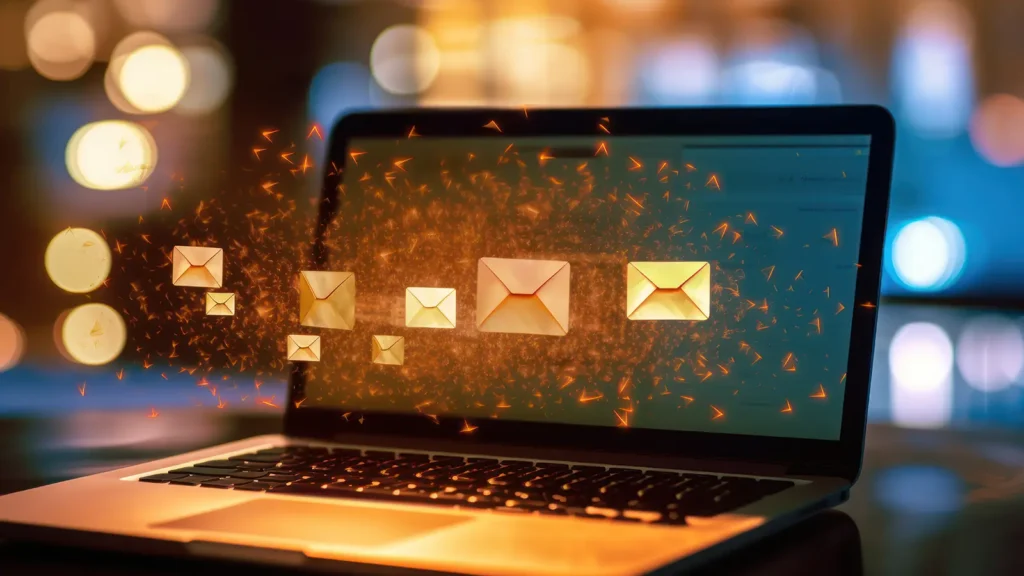The world of mail management is evolving rapidly, driven by technological advancements and changing consumer expectations.
In 2024, several key trends are set to transform how we handle mail, making processes more efficient, secure, and user-friendly. Here’s a look at the seven biggest mail management trends this year.
Key Takeaways
- AI and Machine Learning automate mail sorting and management, saving time and effort while enhancing usability through tailored experiences.
- Enhanced Security and Privacy ensure your personal and confidential information is well-protected with advanced encryption, multi-factor authentication, and strict compliance with data protection regulations.
- Personalized Customer Experiences use data analytics to offer customized services, like tailored notifications, enhancing customer satisfaction and loyalty.
The 7 Biggest Mail Management Trends in 2024

- AI and Machine Learning
- AI and machine learning have automated mail sorting and categorization, saving users time by quickly identifying important items and discarding junk mail.
- These technologies also learn from user behaviors to anticipate needs, suggesting actions like forwarding documents, thus streamlining the mail management process effectively.
- Augmented and Virtual Reality
- Augmented reality (AR) and virtual reality (VR) enhance digital mail experiences by allowing users to interact with their mail in immersive environments.
- AR enables users to handle digital mail as if it were physical, while VR can simulate a 3D mailroom experience, making mail management more intuitive and engaging.

- Enhanced Security and Privacy
- Virtual mailbox providers prioritize security with advanced encryption protocols and multi-factor authentication to protect user data during transmission and storage.
- Compliance with data protection regulations like GDPR ensures lawful handling of personal information, fostering trust between providers and users.
- Eco-Friendly Practices
- The mail industry is adopting eco-friendly practices such as biodegradable packaging and energy-efficient operations to reduce environmental impact.
- Innovations like sustainable packaging materials and renewable energy integration contribute to sustainability efforts, aligning with global environmental goals.

- Smart Productivity Tools and Mobile Experiences
- Mobile apps offer intuitive interfaces for accessing virtual mailboxes, managing mail, and receiving real-time notifications.
- Smart features enable tasks like immediate mail handling actions, enhancing convenience for users with busy lifestyles or frequent travelers.

- Blockchain Technology
- Blockchain ensures secure and transparent mail transactions by recording delivery steps on a tamper-proof ledger.
- It enhances trust in international shipping and high-value item transactions by verifying authenticity and reducing fraud risks.
- Personalized Customer Experiences
- Providers use data analytics to personalize mail services with tailored notifications, preferences for mail handling, and customized offers.
- This customization improves customer satisfaction and loyalty by delivering a more personalized and enjoyable mail management experience.

In 2024, the future of mail management is poised for remarkable advancements. Embracing AI-driven automation, augmented reality (AR), and virtual reality (VR), the landscape is evolving towards more intuitive and immersive ways to handle physical mail.
These innovations not only streamline sorting processes and enhance security measures but also introduce eco-friendly practices like biodegradable packaging, aligning with global sustainability goals.
This convergence of technology and environmental responsibility promises a future where managing mail is not only efficient and secure but also engaging and environmentally conscious.
Summary
- AI and machine learning automate sorting and categorization, while augmented and virtual reality enhance user interaction with physical mail digitally.
- Enhanced encryption, multi-factor authentication, and GDPR compliance ensure secure handling of user data in digital mail management.
- Adoption of eco-friendly practices such as biodegradable packaging and energy-efficient operations supports global environmental goals.
- Integration of smart productivity tools, mobile experiences, blockchain technology for secure transactions, and personalized customer services improve efficiency and satisfaction in mail management.
Frequently Asked Questions (FAQs)
How do intelligent mail sorting systems learn and prioritize physical mail items?
- Intelligent mail sorting systems use AI to analyze and adapt to user behavior, efficiently sorting and prioritizing physical mail based on past interactions and preferences.
What measures can I take to protect the privacy of my physical mail?
- To safeguard the privacy of your physical mail, consider using secure tools like a virtual mailbox.
- These types of services offer physical mail handling and storage that adhere to strict access controls, employing encrypted communication channels for mail handling, and ensuring compliance with data protection regulations.
Can integrating my mail management with productivity tools save time?
- Integrating your mail management with productivity tools streamlines workflows by automating tasks such as mail sorting, tracking deliveries, and managing notifications, ultimately saving time and enhancing organizational efficiency.
Why is it important to optimize physical mail processes for mobile accessibility?
- Optimizing physical mail processes for mobile accessibility ensures that users can conveniently access, manage, and respond to mail items from their smartphones or tablets, reflecting the increasing mobile-centric behaviors of today’s users.
How do data-driven strategies improve engagement in physical mail communications?
- Data-driven strategies in physical mail management enhance engagement by tailoring content and delivery times to recipient preferences, utilizing segmentation and personalization techniques, which ultimately boost interaction rates and customer satisfaction.



